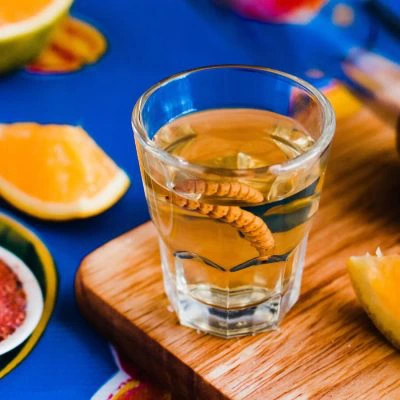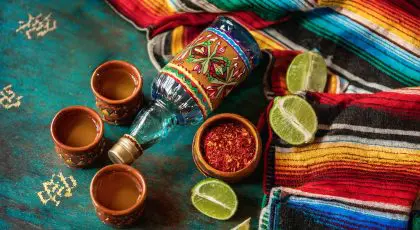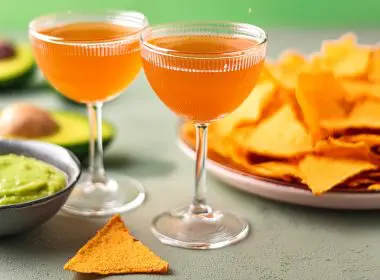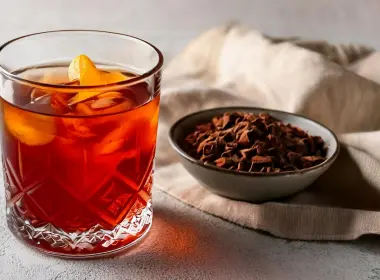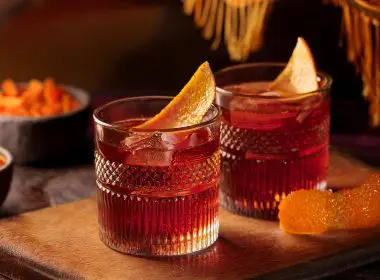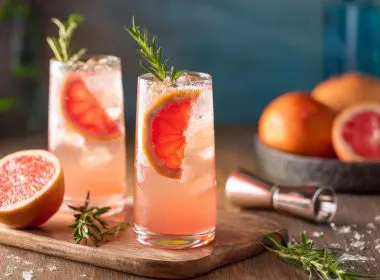Why Is There a Worm in Tequila? (Hint: It’s Not Really Tequila!)
Jump to:
Let’s clear something up straight away: the tequila worm isn’t a real thing. That legendary little critter has never been a part of the tequila legacy. Not once. But that hasn’t stopped generations of thrill-seekers from repeating the myth, swearing by tall tales of hallucinations, virility, and epic dares.
So where did this idea come from, and why do we still talk about it like it is a fact? It turns out the truth behind the worm in tequila bottles is just as wild as the story itself.
Does tequila actually have a worm?

Here’s the short answer: no. There is no worm in tequila bottles. There never was, and there never will be. The myth of a worm in a tequila bottle is one of those persistent pieces of bar-side folklore that just refuses to be quiet, kind of like that guy at the party who won’t stop talking about his backpacking trip through Cambodia.
So, why is there a worm in tequila, or more accurately, why do people think there is?
The confusion likely began in the mid-1900s, when mezcal producers looking to stand out in a growing market decided to do something eye-catching: they dropped a worm (technically, a gusano) into the bottom of the bottle.
It was never part of traditional tequila making, and according to Mexican spirit regulations, it’s actually forbidden in tequila. But the image of a worm in agave-based spirit stuck in the public’s imagination, especially in the US.
Hollywood didn’t help either. Movies and TV shows casually tossed around the idea of eating the worm like a badge of honour. And as tequila rose in popularity, the myth tagged along for the ride.
Mezcal Cocktails 101: Smoky & Flavourful Drinks to Try
The worm belongs in mezcal (not tequila!)
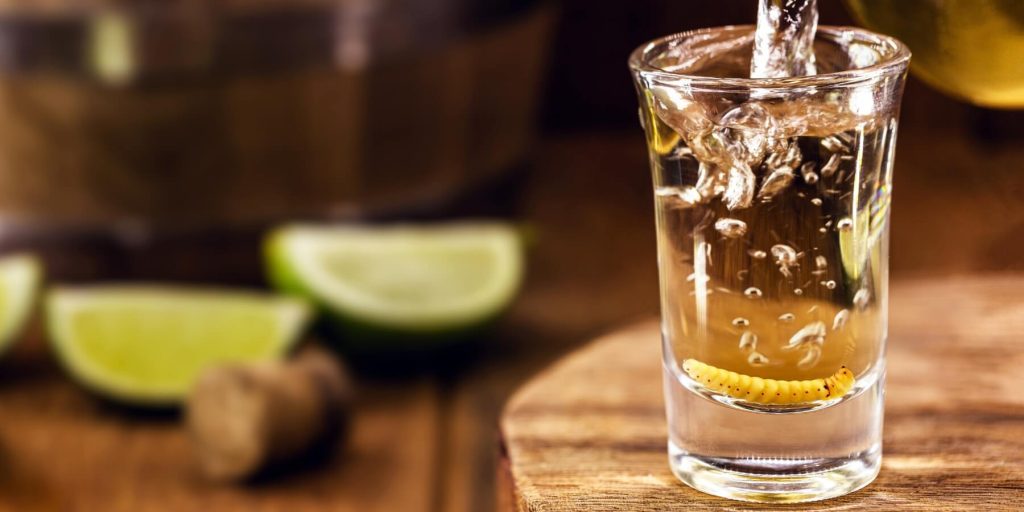
On the flipside, there is such a thing as a worm in an agave-based spirit bottle. It just doesn’t belong in tequila. The so-called tequila worm is found exclusively in mezcal. While both spirits are made from agave plants, they follow different production rules, traditions, and vibes entirely.
Real tequila is made with at least 51% blue weber agave and can only be produced in specific regions like Jalisco. Mezcal, on the other hand, is more flexible. It can be made from a variety of agaves (e.g., espadín, tobalá, or madrecuixe), and it’s mostly produced in Oaxaca.
The production process is also different: the agave hearts (or piñas) are roasted in underground pits before mezcal distillation, giving it that unmistakable smoky flavour.
As for the worm? That comes from the maguey plant, which is another name for agave. This particular creature is a gusano de maguey, a larva that feeds on agave. It has absolutely no place in tequila, which is why Mexico’s official standards board prohibits adding insects or larvae to it.
Mezcal isn’t bound by the same rule, and some brands still add a gusano into the bottle. Not for tradition, necessarily, but for attention.
In short, if you’re sipping a bottle with a worm in it, what you’ve got is mezcal. And if someone hands you a tequila bottle with one inside, well, it’s either a marketing stunt gone wrong or it’s not real tequila at all.
Types of Tequila: A Complete Guide to Blanco, Reposado & Añejo
Why is there a worm in some mezcal bottles?

So, if it’s not tradition, why do some mezcal bottles include a worm? The most common theory is simple: marketing. Back in the 1940s and 50s, mezcal didn’t have the same clout as tequila. To grab attention, especially from American tourists, some producers started adding gusanos to their bottles. It stood out, sparked curiosity, and gave people a story to tell.
There’s also an idea that the worm proved the mezcal was strong enough to preserve the larva. If the gusano stayed intact, it meant the alcohol was potent. Others believed it enhanced the flavour or added mystical powers, like good luck or hallucinogenic effects. Spoiler : it doesn’t.
It’s worth noting that this wasn’t widespread across Mexico. In fact, most mezcaleros never used worms. The trend was aimed more at the export market than at locals. For many connoisseurs, a mezcal with a worm is considered lower quality. The best bottles? They let the agave do the talking—no gimmicks needed.
Read next: The Ultimate Guide to Delicious Reposado Tequila Cocktails
What is the mezcal worm?
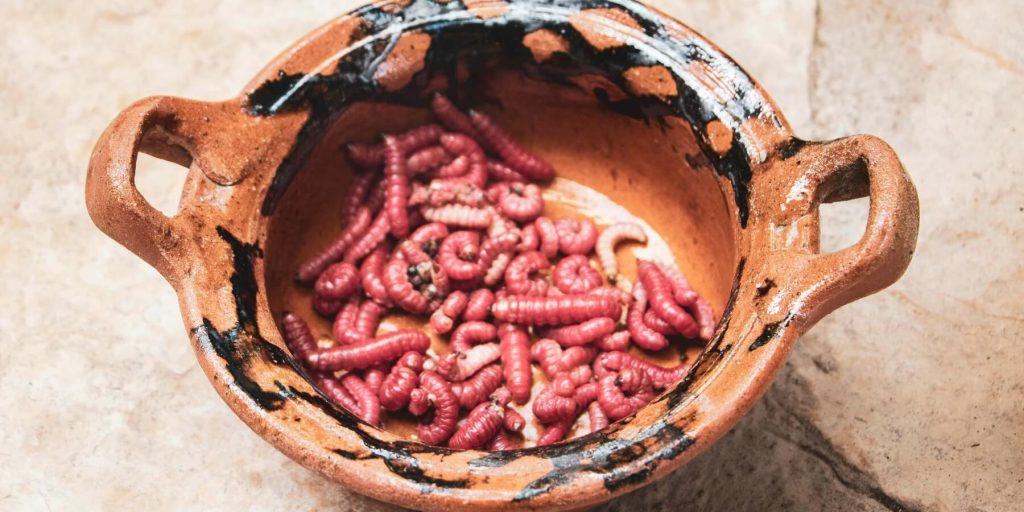
The worm you’ll find in some mezcal bottles isn’t a worm at all. It’s a larva, known as gusano de maguey, that lives on and feeds off agave plants. There are two main types: the white gusano, which becomes a caterpillar, and the red gusano, which transforms into a moth. The red one (gusano rojo) is more commonly used because it feeds on the heart of the maguey, which is also the part used to make mezcal.
Also see: 14 Best Tequila Mixers (What to Mix with Tequila)
Can you eat the mezcal worm?
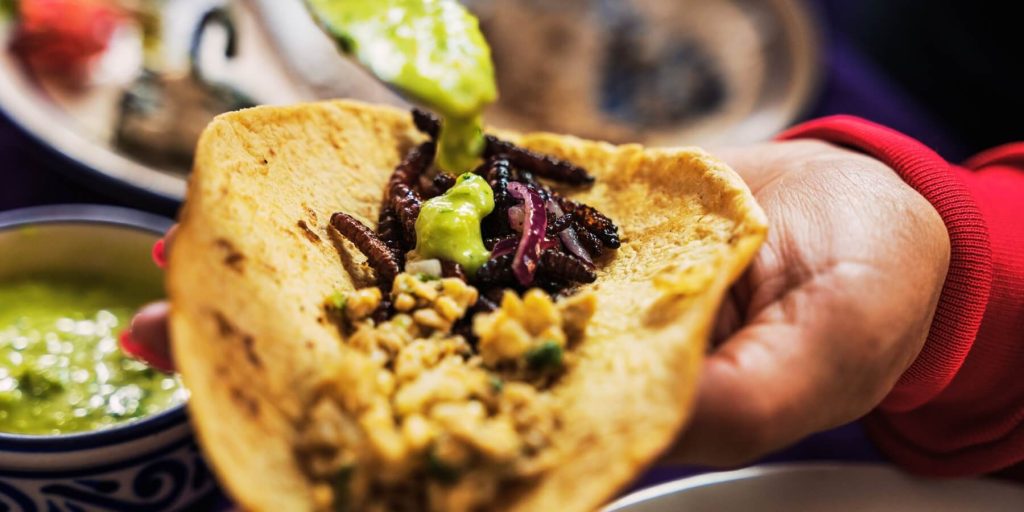
Yes, you can eat the mezcal worm. It won’t hurt you, and it’s not toxic or dangerous. That said, it also won’t up the ABV, grant you mystical powers, or send you on a hallucinogenic trip. That part is all urban legend. In the world of mezcal, it’s less about the worm, and more about the story it tells.
These larvae can wreak havoc on agave crops, but, despite their humble origins as pests, gusanos have become a prized culinary ingredient in traditional Mexican cuisine. You’ll find them in tacos, toasted and salted, or ground into powder to make gusano salt—a smoky, savoury, slightly earthy seasoning that’s often served alongside mezcal.
In some parts of Mexico, eating the gusano is seen as a nod to tradition, or a party trick for the bold. It’s protein-rich, earthy in flavour, and often used to bring a bit of theatre to the drinking experience. But whether you crunch it or skip it, the worm won’t change the liquor’s effect.
If anything, it’s more about the ritual. Sharing mezcal, respecting the craft, and maybe, just maybe, braving the worm is part of what makes mezcal culture so layered and compelling.
Check this: 8 Must-Try Añejo Tequila Cocktails
Famous mezcal brands that include the worm
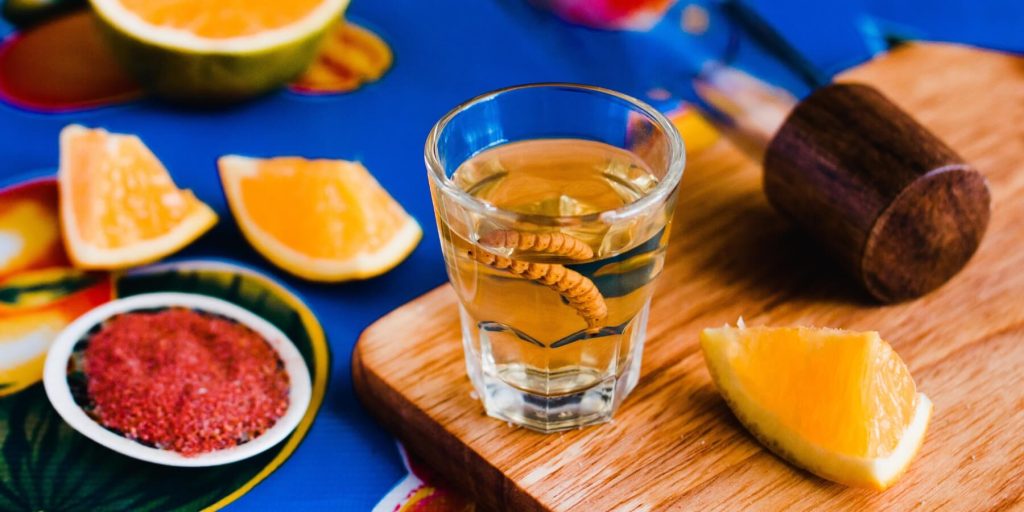
Not all mezcals include the worm, in fact, most don’t. Among those that do, the presence of the gusano is more about nostalgia and novelty than quality. Some well-known names have leaned into the worm tradition, but these brands typically cater to adventurous drinkers or those new to mezcal, curious about the old myths.
But if you’re hunting for something premium and worm-free, check out labels like Montelobos, which focuses on craftsmanship and terroir. And while it’s rare to find a top-tier mezcal with a worm inside, you’ll still spot the occasional bottle aiming to stir up curiosity.
Inside scoop: Trending Cocktail Flavours with Espolòn Tequila
The tequila worm is one of those bar myths that’s hard to shake, but now you know the truth. Tequila will never have a worm in the bottle. Only some mezcal producers include it, and mostly for marketing reasons. While the gusano has its place in agave culture, the real heart of tequila and mezcal lies in the skill of the makers, the quality of the agave, and the stories shared over every pour.
Want to experience top-shelf agave spirit the right way? Visit the Espolòn and Montelobos websites to stock up and sign up for our tasty monthly newsletter to stay in the mix.
